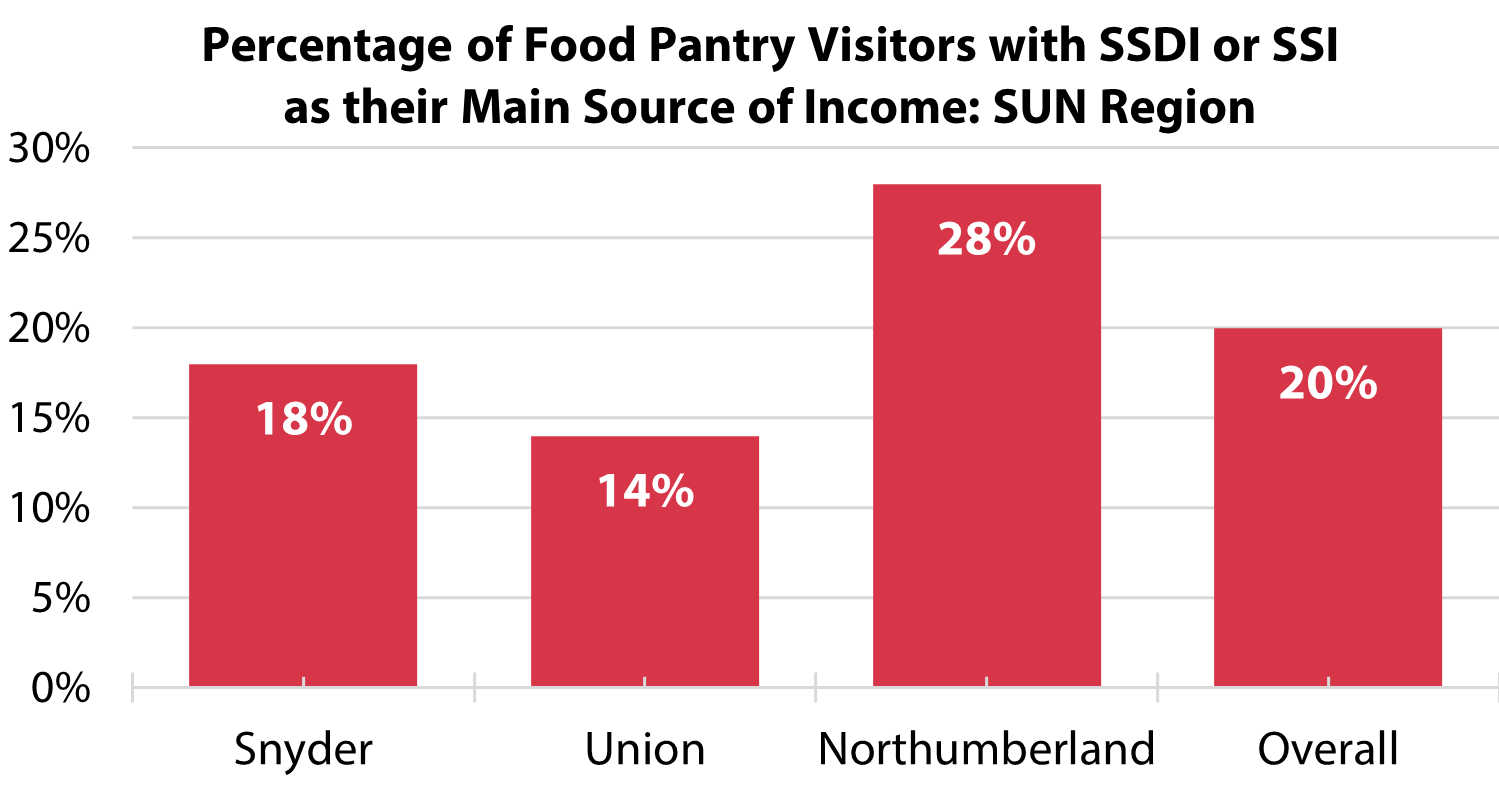Disability and Food Insecurity in the Central Susquehanna Valley
By Morgan Flood, Policy Research Specialist
July 26 is ADA Day; this year marks the 34th anniversary of the 1990 signing of the Americans with Disabilities Act (ADA), a landmark piece of federal legislation codifying the rights of Americans with disabilities to equal access, equal treatment, and inclusion in public life and employment. Even with this law and other protections in place, along with important social progress toward inclusivity made over the last few decades, disabled individuals are still disproportionately likely to face food insecurity. In this month’s policy blog, the CPFB Policy, Research, and Impact team highlights national data around food insecurity among people with disabilities, along with a key finding from our new Snyder, Union, and Northumberland (SUN Region) Community Hunger Mapping report.
A 2020 USDA analysis using 2018 data found that households including disabled persons face higher rates of food insecurity than do households without individuals with disabilities. A staggering 33.0% of households with a working-age member who was not in the labor force due to disability experienced food insecurity. Additionally, 24.8% of households with a working-age member whose disability did not prevent them from working were food insecure, while the food insecurity rate in households without a disabled member was 12.0%.

The USDA analysis also noted that these disproportionate food insecurity rates exist even though two federal programs, Social Security Disability Insurance (SSDI) and Supplemental Security Income (SSI), are designed to help individuals with disabilities meet their basic needs. Though SSI and SSDI differ in program specifics and eligibility standards – SSI lacks work history requirements and may also support disabled children, while SSDI often has higher benefit amounts – both provide monthly cash benefits to individuals who are unable to work.
Even if persons with disabilities receive SSDI or SSI, the difficulty of applying for and being approved for SSDI or SSI, inadequate benefit amounts, asset caps for SSI, and the higher medical costs disabled individuals face are all factors that contribute to a greater likelihood of experiencing food insecurity.
The most recent Community Hunger Mapping project completed in Snyder, Union, and Northumberland counties identified trends aligning with the USDA’s findings. Across the region, nearly 20% of pantry survey respondents reported that they rely primarily on SSDI or SSI for income, with Northumberland County having the highest proportion at 28%, and Union and Snyder having lower but still substantial rates at 14% and 18% respectively.

Regardless of county, these rates are major overrepresentations of SSDI and SSI recipients compared to the general population – as of 2022, just 5.8% of Pennsylvanians participated in either program. The high proportion of disability beneficiaries among pantry visitors indicates that program benefit amounts are not enough to make ends meet.
Indeed, the average monthly benefit amount for Pennsylvania’s SSDI recipients in 2022 was $1,491, and average benefits for SSI recipients were even lower at just $657. Both amounts are well below the income eligibility threshold for federally funded charitable food, even for a household of one. Among survey participants, fully 85% of people who listed SSI or SSDI as their primary income source had a monthly household income less than $2,000, and 32% had an income below $1,000.

Furthermore, 54% of survey respondents without children and 28% of households with children said they faced barriers to work relating to disability, but only 37% and 16% respectively were SSDI or SSI beneficiaries. The disparity between the number of households who cited disability as a barrier to work and those who said they receive SSI or SSDI, speaks volumes about the difficulty of applying and being approved for benefits. As of 2021, the final award rate for SSDI applicants nationally was only 26.8%, and 12.2% of denials were for technical rather than medical reasons. For SSI, the award rate was 30.7%, with a 13.7% technical denial rate.
The Central Pennsylvania Food Bank knows that simply observing and understanding the drivers of food insecurity among people with disabilities and all communities is not enough; we must take action to address the root causes if we are to end hunger. We are proud to support our partner agencies as they work to provide equal access and resources for disabled neighbors, but there are more opportunities to make real change: advocating for legislation that could increase disability benefit amounts, raising the SSI asset cap, streamlining the benefit application process, and/or expanding eligibility for and the flexibility of ABLE accounts, which are tax-exempt, asset cap-exempt savings accounts for people with disabilities. To learn more about our findings in the SUN region on a wide variety of topics, please see the full report!
